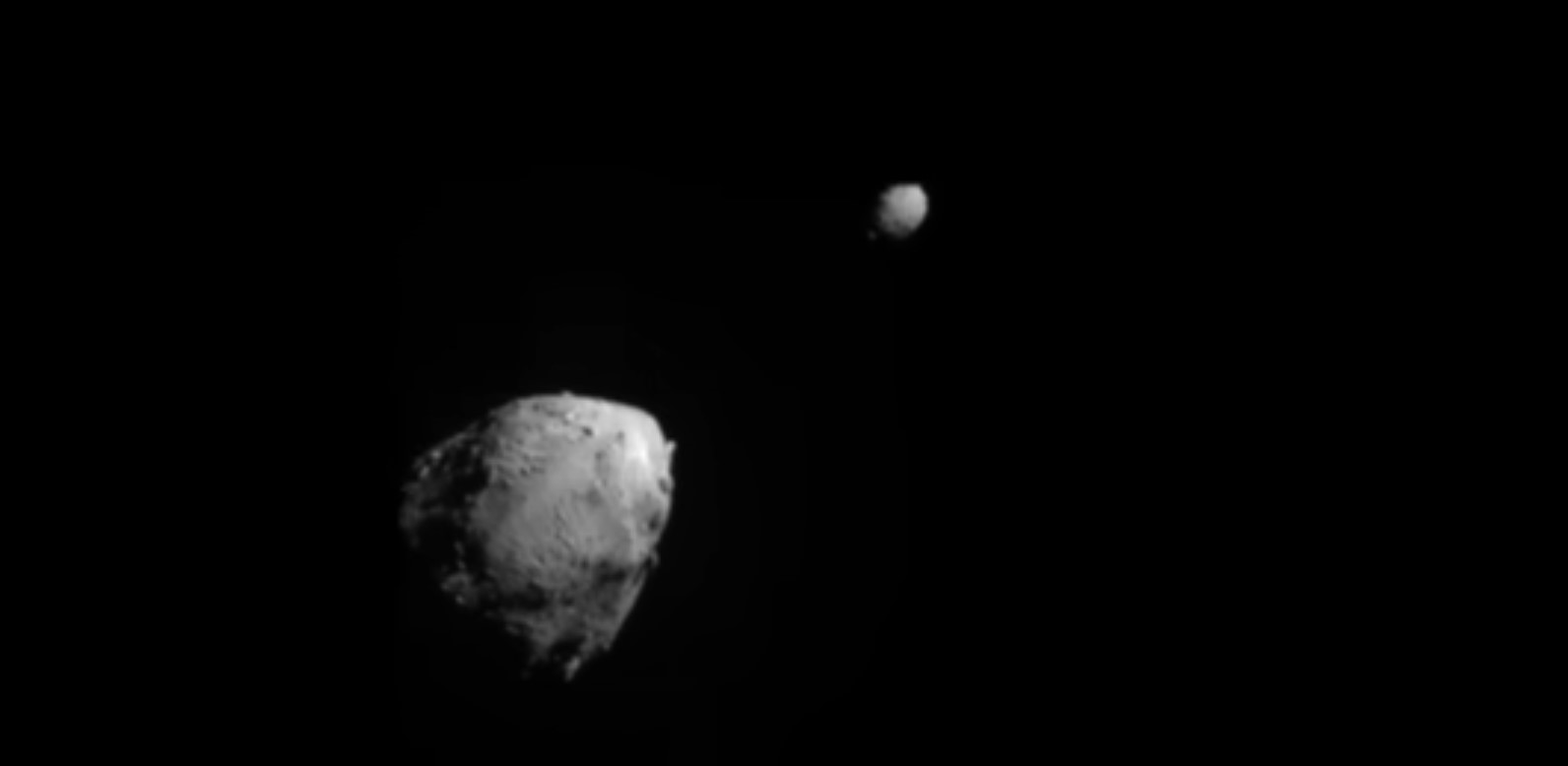Asteroid Didymos is spitting rocks out into space.
Last fall, when NASA’s DART mission impacted Didymos’ moon Dimorphos in a dramatic (and successful) attempt to change the object’s orbit, DART got a quick look at the Didymos system before the probe was purposefully smashed to pieces.
Alongside demonstrating the capability to prevent future asteroid strikes on Earth, DART also gathered new information about the dynamics of the pair of asteroids. The data collected suggests that Didymos is actively throwing material out into space, and there are likely millions of other small asteroids doing the same across the Solar System, all the time.
The popular image of an asteroid as an unchanging, solid chuck of rock has evaporated in recent years, as we’ve come to learn more about these objects. While some asteroids fit this classification, just as many do not. Asteroids are the detritus left over from the formation of the Solar System, and many of them are little more than loose rubble piles, held weakly together by gravity.
Asteroid Bennu, which was visited by NASA’s OSIRIS-REx mission in 2020, is a prime example. When OSIRIS-REx touched down to take a sample, it sank nearly two meters into the loose surface like a child in a ball pit. The spacecraft also unexpectedly photographed material ejecting off the asteroid and into space, indicating that these objects are more active and dynamic than once thought.

Didymos has been under scrutiny for a while now in preparation for DART and the European Space Agency’s follow-up mission, Hera. Now that DART has seen the asteroid up close, researchers have a wealth of data about its shape, mass, and rotation.
One thing they’ve learned is that it’s spinning, and quite quickly, completing one full rotation every 2 hours and 16 minutes. At those speeds, Didymos is an asteroid “on the edge of stability,” according to a recent preprint published on ArXiv.
At the equator, where the effects of the spin are strongest, rocks and dust are able to lift off the surface, levitating or moving into orbit.
“Massive particles potentially levitate for some time, land on the surface and lift off again, repeating such cycles over and over, or just land at latitudes from which further lift off is not possible,” the authors write.
Some of the floating rocks reach orbit, and some of those are likely to be deposited onto the moon, Dimorphos. Smaller particles can even escape the system, blown away forever by the solar wind.
Interestingly, large objects tend to stay afloat longer than small ones. This is because on the day side of the asteroid, solar radiation pressure will quickly push the smaller grains back down to the surface.
These conclusions are somewhat preliminary, as they are based on best estimates of the asteroid’s size, composition, and shape, which the Hera mission should be able to corroborate when it arrives in 2027. But the principle at work applies across the Solar System: if Earth were spinning fast enough (once every 84 minutes), it would be possible to jump from the equator into orbit in the same way these rocks are lifting off fast-spinning asteroids like Didymos.
The excessively fast rotation of Didymos – and other asteroids like it – is a solar-powered phenomenon.
These asteroids are under the influence of the YORP effect, in which the Sun heats different parts of an asteroid to different temperatures depending on their albedo. That heat is later radiated away, producing thrust. It’s a tiny effect, but it builds over time and can eventually push an asteroid around faster and faster like wind turning a windmill.
Astronomers have even seen asteroids rip themselves to pieces via the YORP effect, like asteroid P/2013 R3 in 2013.

Didymos is unlikely to see such a dramatic Rapid Unscheduled Disassembly anytime soon. 97% of the particles that lift off the surface land again within 5 hours. But it is something mission planners may have to take into account for future spacecraft that make close approaches to fast-spinning asteroids, if they want to avoid damage to the probe.
Learn More:
Nair Trógolo, Adriano Campo Bagatin, Fernando Moreno, Paula G. Benavidez, “Lifted particles from the fast spinning primary of the Near-Earth Asteroid (65803) Didymos.” ArXiv Preprint.
Feature Image: Didymos (left) and Dimorphos (right) as seen by the DART mission minutes before impact. NASA/Johns Hopkins APL.

